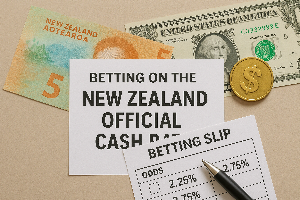
The government's debt may be higher than previously forecast and it may have to issue more bonds.
McDonald said NZ had one of the world's fastest and largest fiscal response to covid, as well as “QE on steroids,” and that means the NZ economy is suffering more than other countries from covid's aftermath.
The Reserve Bank's QE, known as the large-scale asset programme (LSAP) and another name for money printing, reached about $55 billion before it ceased in July 2021 and it also spent another $19 billion on the funding for lending programme (FLP), a scheme for funnelling cheap three-year money to banks, which ended in December 2021.
The result has been that four of the last five quarters has seen negative economic growth and the outlook for the next year “is modest at best,” McDonald said.
NZ is suffering from higher inflation than most countries and it's likely to prove stickier on the way down than in most countries.
The consumers price index rose 4.7% in calendar 2024, well outside the RBNZ's 1% to 3% target range.
The nation's infrastructure deficit, and likely 10%-plus increases in local body rates, will contribute to that stickiness in inflation, he said.
The government borrowed about $100 billion through covid and the interest bill is costing the county about $5 billion a year, meaning about $50 billion will be going to bond holders over the next 10 years, “which isn't going into healthcare, education or infrastructure deficits.”
“That's almost a forgotten headache of covid that makes us quite a bit poorer from an economic and human perspective going forward.”
NZ still favoured
McDonald said that while US Treasuries and the US dollar “continue to be a store of value in an uncertain world,” investors still see New Zealand as a good destination for their investment.
“More and more international investors are buying our bonds and offshore ownership continues rising,” he said.
According to Reserve Bank data, non-resident holdings of government bonds have risen from 24.7% of the total on issue in February 2021 to 50.4% in February 2024 with the dollar amount more than doubling over that period from $36.08 billion to $79.41 billion.
McDonald said the central bank's independence and the strength of the financial system mean our government bonds continue to be a favoured destination, but that NZ remains a small market.
McDonald said Nikko's NZ bond portfolio, which can be anywhere between 18 months long or short, is currently about a year longer than the Bloomberg composite benchmark.
“We've got some powder dry. Any push up in yields we see as buying opportunities,” he said.
“The surest bet we can have is that in one year's time, interest rates will be lower.”
However, financial markets have priced in about 75 basis points worth of cuts from the current 5.5% OCR “and that's probably too much.”
While McDonald thinks the RBNZ will start cutting earlier than it is projecting – the February monetary policy statement indicated the first cut would be in the second quarter of 2025, “we think they will go earlier but maybe not go as far.”
While yields have already fallen, McDonald still favours longer-dated bonds and believes there will be better capital gains available in that part of the curve and that it's better to buy now rather than to wait.
“If you try and wait until all the ducks line up, it will be too late.”





Comments
No comments yet.
Sign In to add your comment